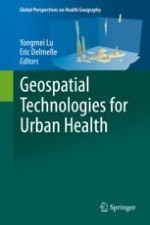2020 | OriginalPaper | Chapter
Extending Volunteered Geographic Information (VGI) with Geospatial Software as a Service: Participatory Asset Mapping Infrastructures for Urban Health
Authors : Marynia Kolak, Michael Steptoe, Holly Manprisio, Lisa Azu-Popow, Megan Hinchy, Geraldine Malana, Ross Maciejewski
Published in: Geospatial Technologies for Urban Health
Publisher: Springer International Publishing
Activate our intelligent search to find suitable subject content or patents.
Select sections of text to find matching patents with Artificial Intelligence. powered by
Select sections of text to find additional relevant content using AI-assisted search. powered by
